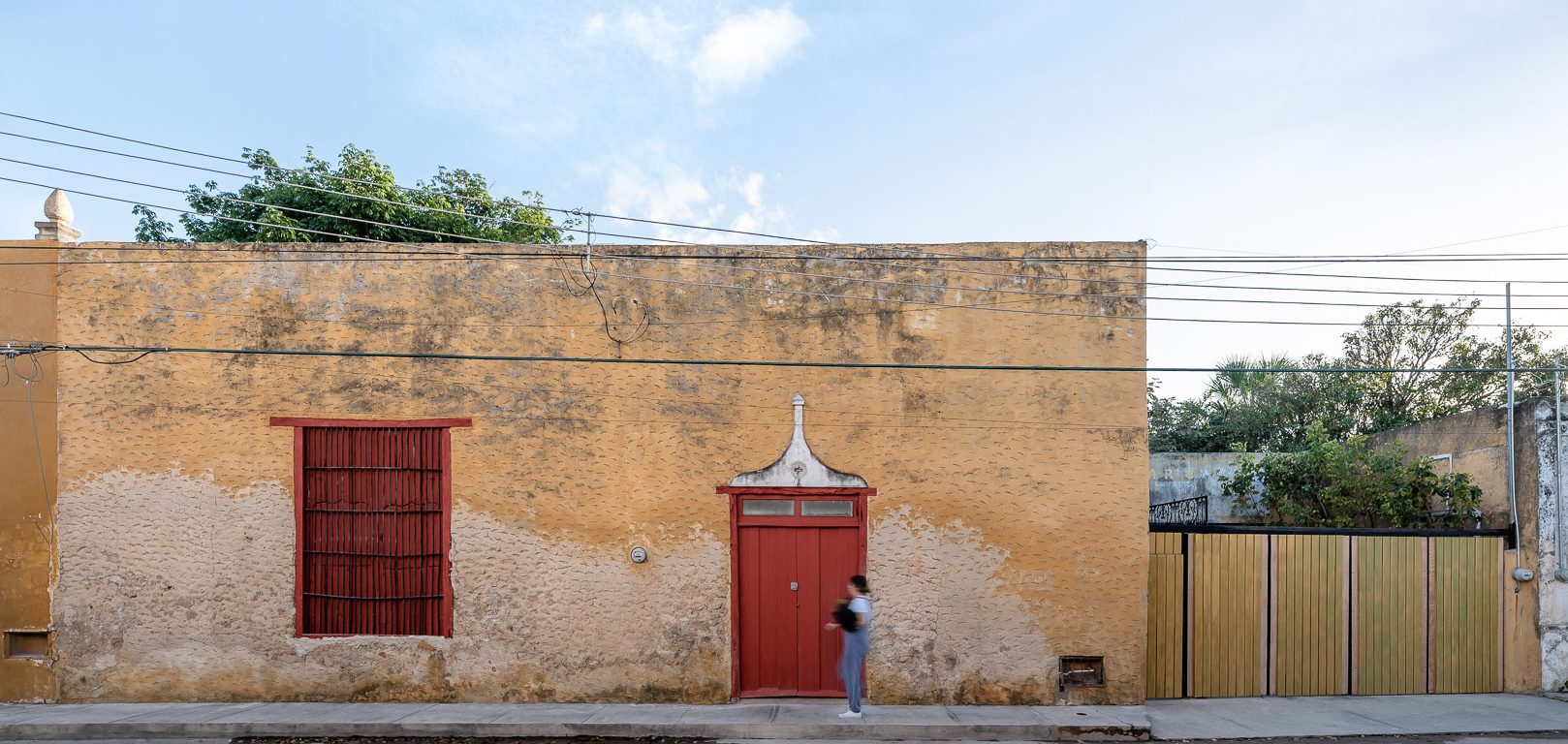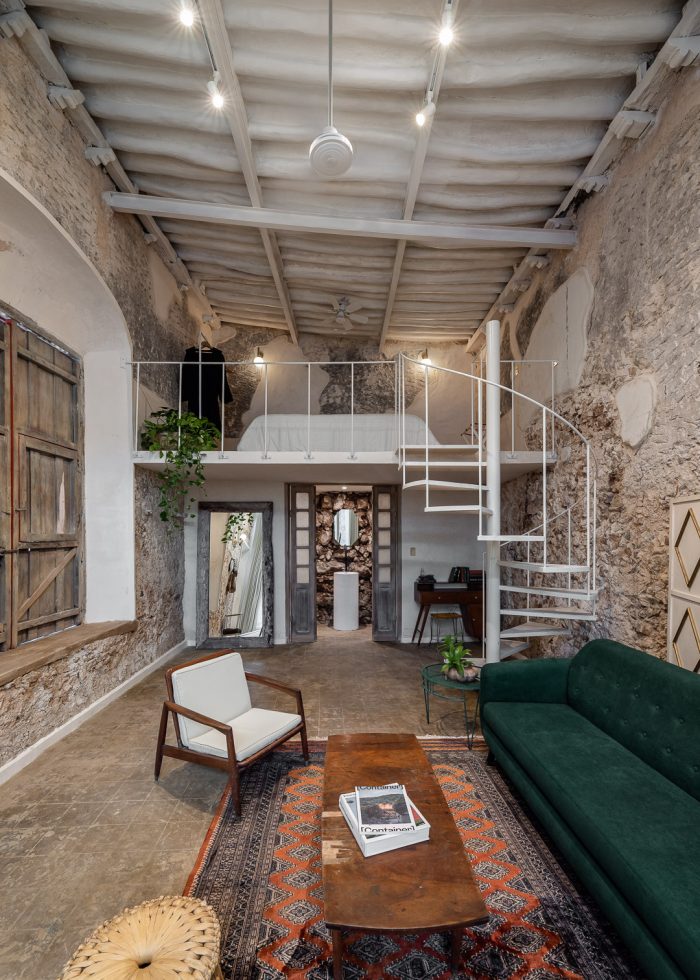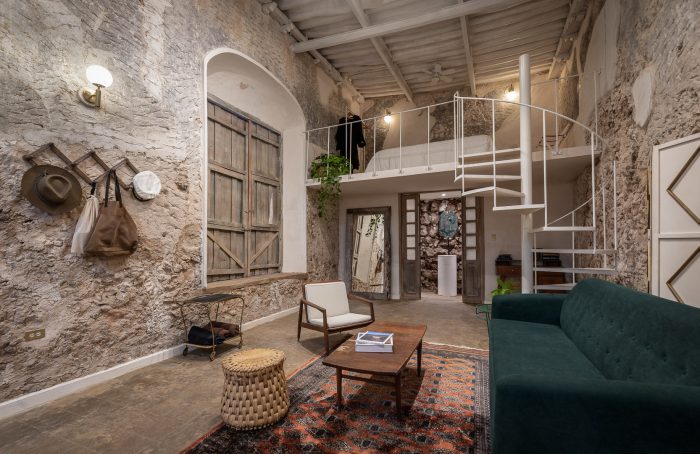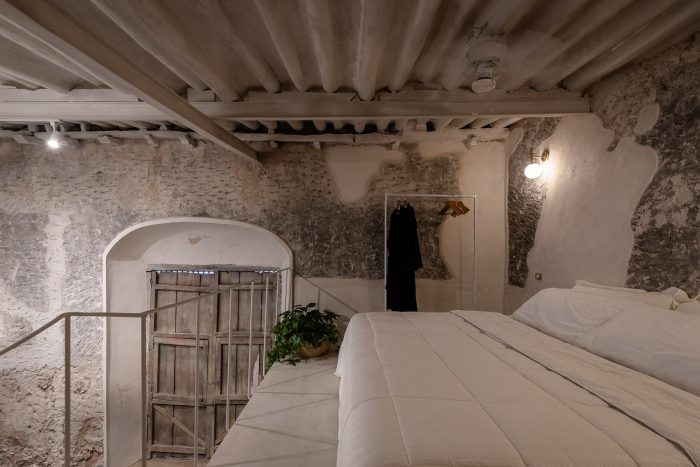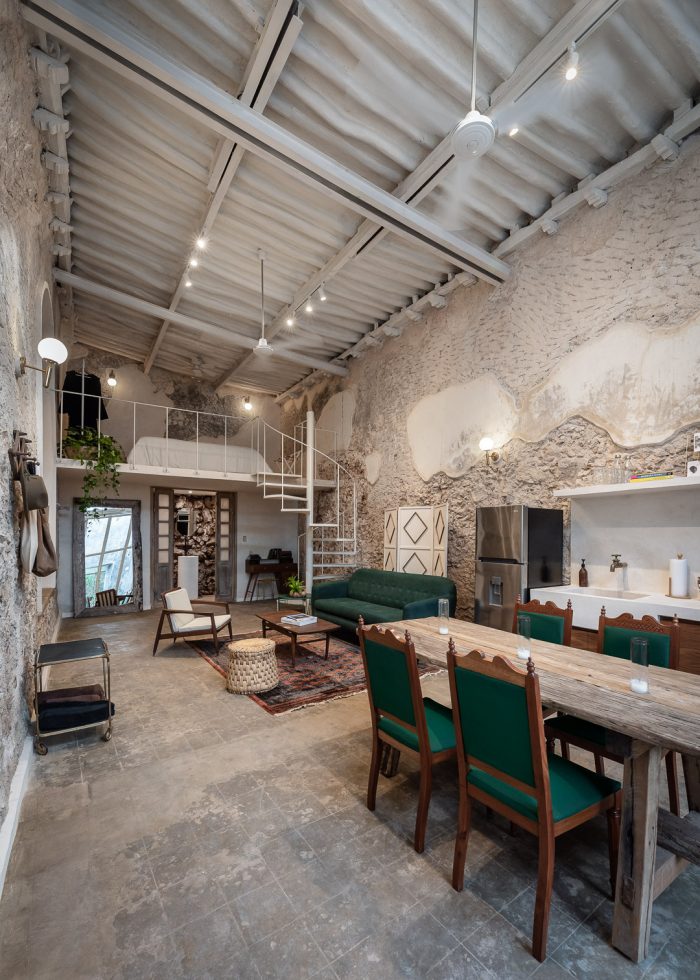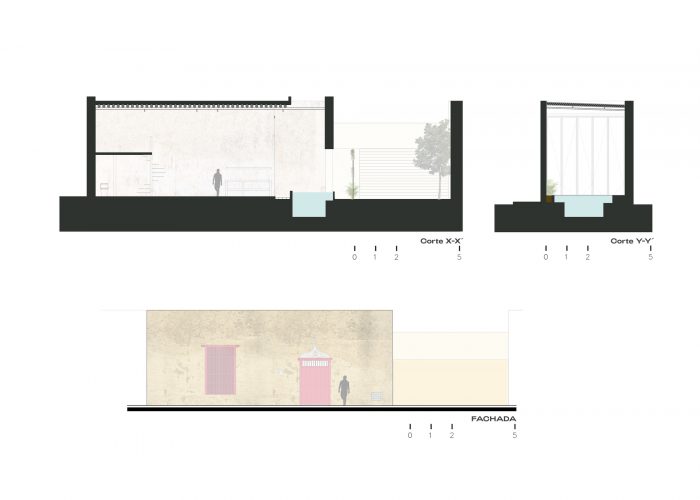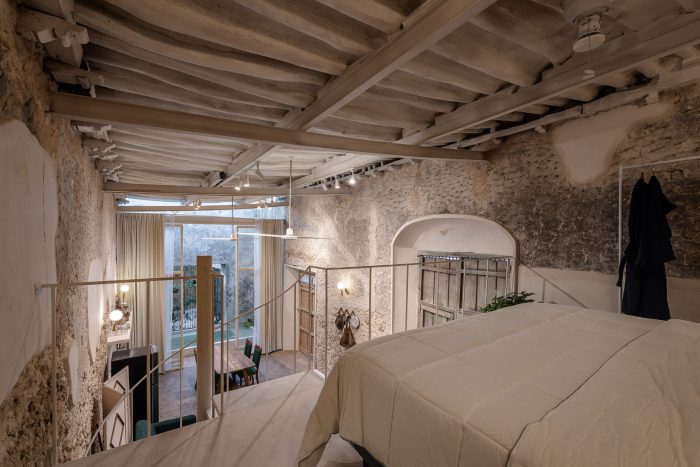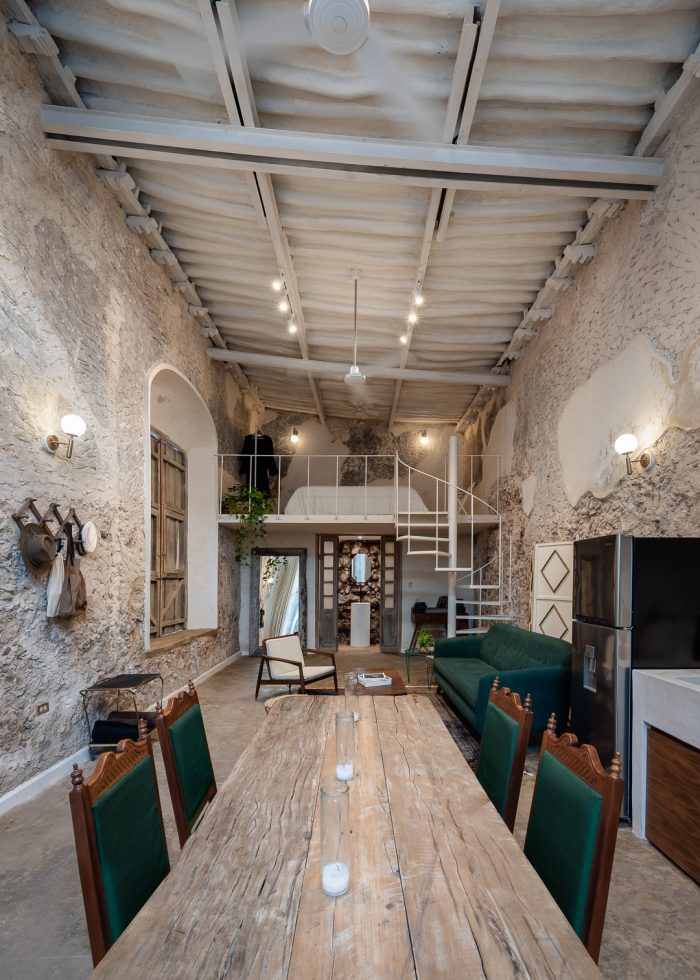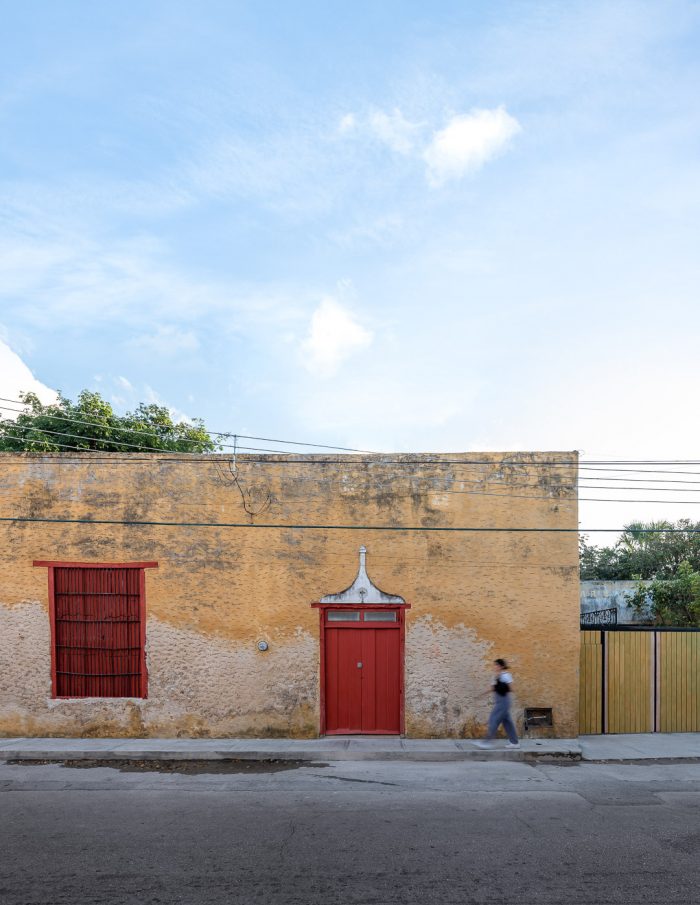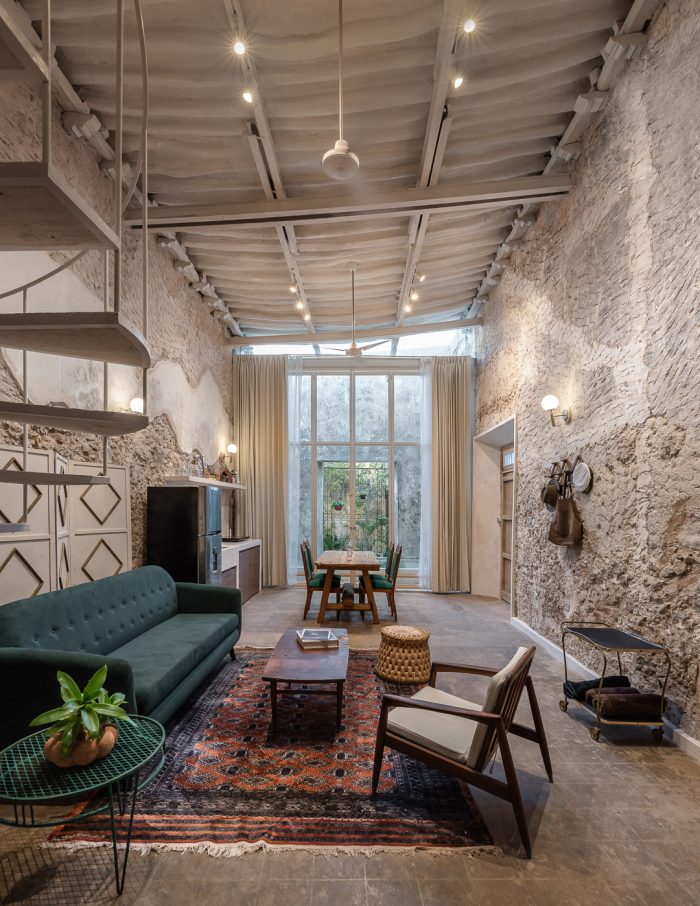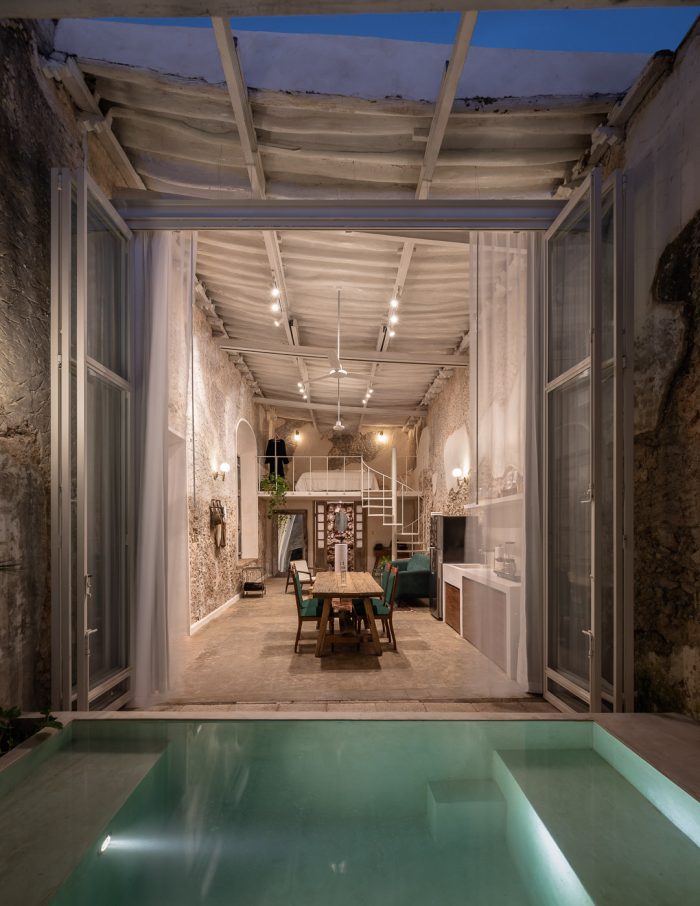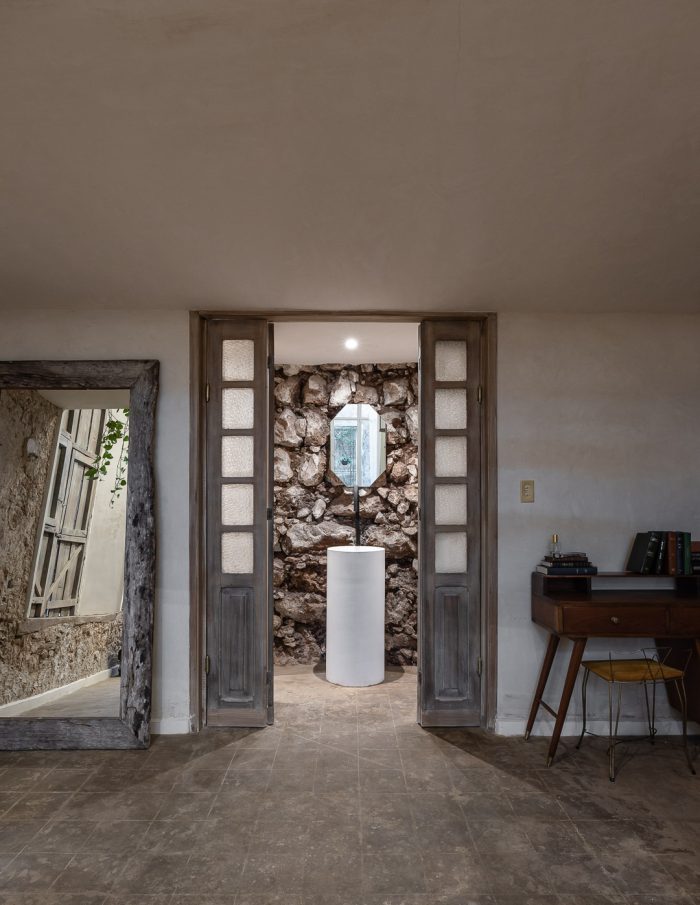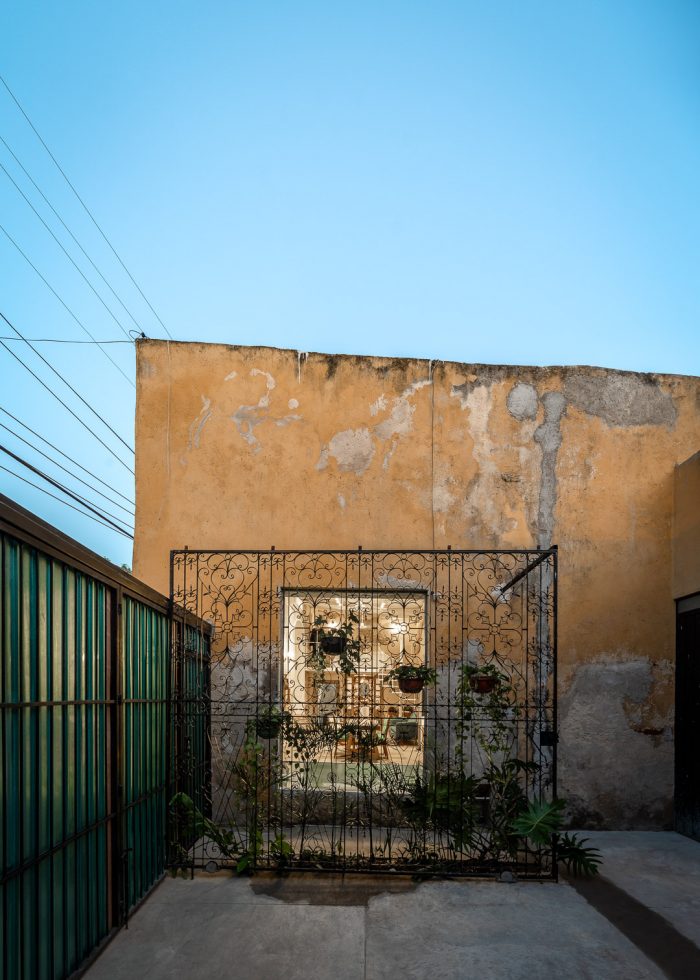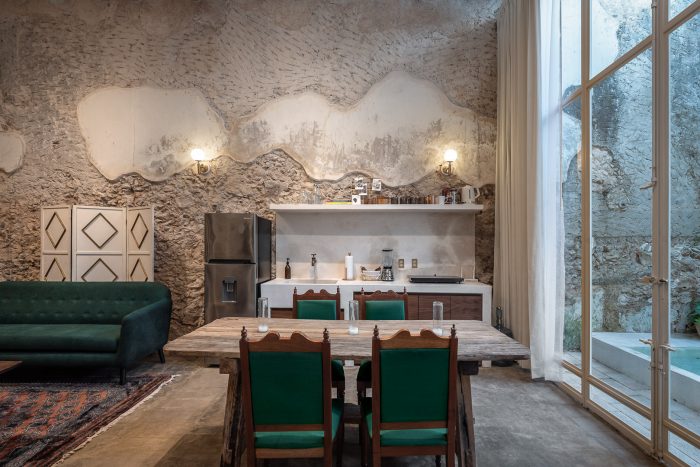该项目位于尤卡坦州梅里达的圣塞巴斯蒂安区的Ermita de Santa Isabel教堂附近.它是对一栋废弃建筑的改造,改造成一个理想的空间,为那些想在梅里达居住的夫妇提供一个历史中心的标志性街区。
The project is located near the Ermita de Santa Isabel Church in the San Sebastián district in Mérida Yucatán. it is a renovation of an abandoned building, transformed into an ideal space for couples who want to live in Mérida, in an iconic neighbourhood of the historic center.
该项目开发在一个54平方米的海湾,12米宽,4.5米深。外立面由砖石组成,展示了用当时的泥土交叉片装饰的墙体的建造过程。外立面有两个开口,一个是通道门,一个是窗户,都是用板条木做的,窗户用铁铰链。内壁上,有五根木条的交接处已经老化,木板已经坍塌。在墙体上,有遮挡砖石的痕迹,在东侧,有一个钢筋混凝土夹层,由两面墙支撑,卫生间就在这里。
The project is developed in a 54 m2 bay, 12 meters wide and 4.5 meters deep. The facade is made up of masonry which shows the construction process of the wall decorated with clay crosspieces of the time. The facade has two openings, one for the access door and one for the window, both made of slatted wood, the window with iron hinges. On the interior, five of the interlocks of wooden logs have deteriorated and the slab has collapsed. In the walls, there are signs of cover-ups of masonry and on the east side, there is a reinforced concrete mezzanine supported by two walls where the bathroom is located.
该方案力求尊重并留下证据,以证明建筑中时间流逝的伤痕。此外,利用板块中现有的空隙,形成一个庭院,让光线和通风以自然的方式进入室内空间。院子里放置了一个水体,以使居民免受城市炎热天气的影响。旁边是厨房-餐厅,有一扇金属和玻璃制成的折叠门,失去了室内-室外的限制,这就有机会将社交区域转变为一个封闭的露台。一个由沙发、扶手椅和凳子组成的房间,以及空间另一端的浴室,补充了底层的社交程序。螺旋金属楼梯通向夹层,那里有一个休息空间。
The proposal seeks to respect and to leave evidence of the scars of the passage of time in the building. In addition, the existing gap in the slab is taken advantage of in order to generate a courtyard that allows the entry of light and ventilation in a natural way to the interior space. A body of water is placed in the courtyard to refresh the inhabitants from the hot weather of the city. Next to it is the kitchen-dining room with a folding door made of metal and glass with the idea of losing the interior-exterior limit, which gives the opportunity to transform the social area into a contained terrace. A room made up of a sofa, an armchair and a stool, as well as the bathroom at the other end of the space, complement the social program on the ground floor. The helical metal staircase gives access to the mezzanine where a resting space is located.
材料提案保留了废墟的原始状态,提案打算修复、恢复和巩固板块、墙壁和地板。新元素的整合,如厨房、水体、服务设施和底板,都是用白色抛光水泥创造出来的,这也被用于门窗的框架,与墙体的原貌形成对比。
The material proposal preserves the original state of the ruin, the proposition intends to repair, recover and consolidate the slab, walls and floors. The integration of new elements such as a kitchen, a body of water, services and baseboards, are created using white polished cement, which is also used in the framing of the windows and doors to contrast with the original finish of the walls.
建筑师:Arista Cero, Gina Góngora
面积: 54 m²
年份:2020年
制造商: AutoDesk, Adobe, COP, Comex, Fester, Jako, LINKE, MALLASOMBRA, Tecnolite, Trimble, VAGANTES MUEBLES
首席建筑师:Gina Góngora, Fernando Gómez Vivas, Mario González , André Borges.
设计团队:Mario Orci
工程设计:Arq. Hernán F Gómez Amaro
合作者:Erika Cervera
城市:梅里达
国家:墨西哥
Architects: Arista Cero, Gina Góngora
Area: 54 m²
Year: 2020
Manufacturers: AutoDesk, Adobe, COP, Comex, Fester, Jako, LINKE, MALLASOMBRA, Tecnolite, Trimble, VAGANTES MUEBLES
Lead Architects:Gina Góngora, Fernando Gómez Vivas, Mario González , André Borges.
Design Team:Mario Orci, Marco Orci.
Engineering:Arq. Hernán F Gómez Amaro
Collaborators:Erika Cervera.
City:Mérida
Country:Mexico

